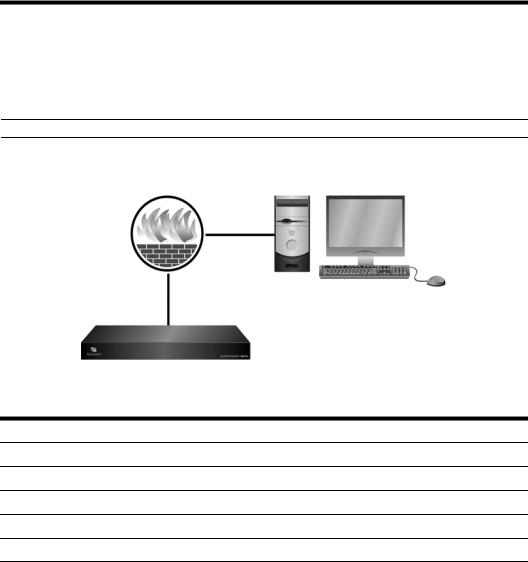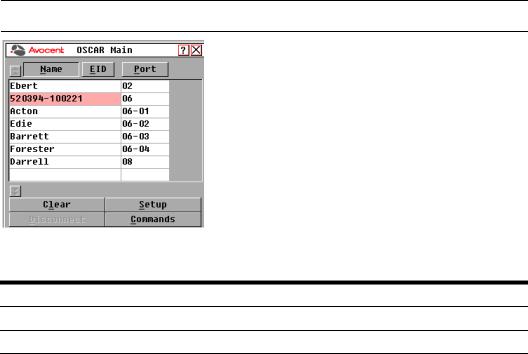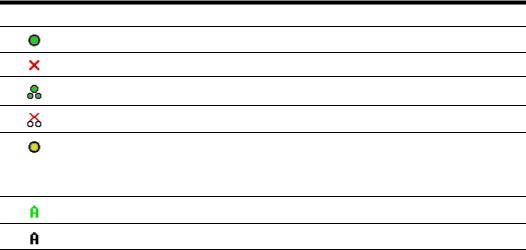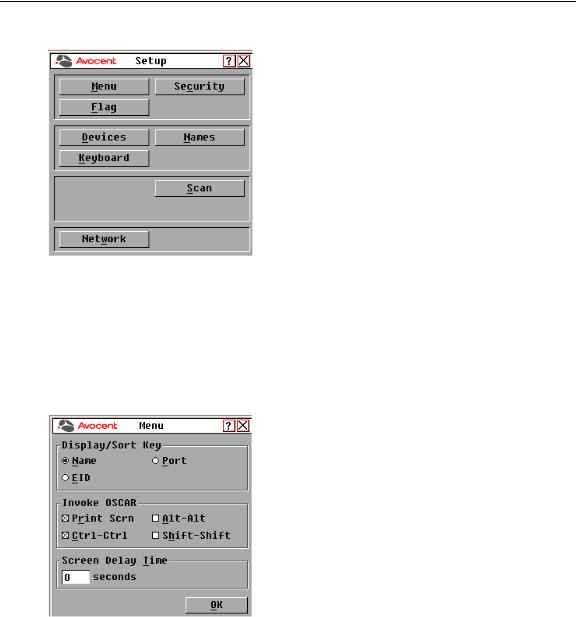Avocent 3016, 3008 User Manual

AUTOVIEW® 3008/3016
Installer/User Guide

USA Notification
Warning: Changes or modifications to this unit not expressly approved by the party responsible for compliance could void the user’s authority to operate the equipment.
Note: This equipment has been tested and found to comply with the limits for a Class A digital device, pursuant to Part 15 of the FCC Rules. These limits are designed to provide reasonable protection against harmful interference when the equipment is operated in a commercial environment. This equipment generates, uses and can radiate radio frequency energy and, if not installed and used in accordance with the instruction manual, may cause harmful interference to radio communications. Operation of this equipment in a residential area is likely to cause harmful interference in which case the user will be required to correct the interference at his own expense.
Canadian Notification
This Class A digital apparatus complies with Canadian ICES-003.
Cet appareil numérique de la classe A est conforme à la norme NMB-003 du Canada.
Japanese Notification
Korean Notification
Safety and EMC Approvals and Markings
UL, FCC, cUL, ICES-003, CE, VCCI, MIC, C-Tick, GOST

AutoView® 3008/3016 Switch
Installer/User Guide
Avocent, the Avocent logo, The Power of Being There, AutoView, Dambrackas Video Compression and OSCAR are registered trademarks of Avocent Corporation or its affiliates in the U.S. and other countries. All other marks are the property of their respective owners.
© 2010 Avocent Corporation. 590-920-501C

Instructions
This symbol is intended to alert the user to the presence of important operating and maintenance (servicing) instructions in the literature accompanying the appliance.
Dangerous Voltage
This symbol is intended to alert the user to the presence of uninsulated dangerous voltage within the product’s enclosure that may be of sufficient magnitude to constitute a risk of electric shock to persons.
Power On
This symbol indicates the principal on/off switch is in the on position.
Power Off
This symbol indicates the principal on/off switch is in the off position.
Protective Grounding Terminal
This symbol indicates a terminal which must be connected to earth ground prior to making any other connections to the equipment.

iii
TABLE OF CONTENTS
List of Figures ................................................................................................................ |
vii |
List of Tables................................................................................................................... |
ix |
Chapter 1: Product Overview.......................................................................................... |
1 |
Features and Benefits ........................................................................................................................ |
1 |
Reduce cable bulk ....................................................................................................................... |
1 |
Access the AutoView 3008/3016 switch via a standard TCP/IP network .................................. |
2 |
Chapter 2: Installation ..................................................................................................... |
3 |
AutoView 3008/3016 Switch Connectivity......................................................................................... |
3 |
Installation Overview......................................................................................................................... |
3 |
Getting started ............................................................................................................................ |
5 |
Setting up your network .............................................................................................................. |
5 |
Rack Mounting an AutoView 3008/3016 Switch................................................................................ |
6 |
Rack mounting safety considerations ......................................................................................... |
6 |
Connecting the AutoView 3008/3016 Switch Hardware ................................................................... |
6 |
Adjusting Mouse Settings on Target Devices .................................................................................... |
8 |
Connecting to the OBWI Through a Firewall ................................................................................... |
8 |
Verifying the Connections................................................................................................................ |
10 |
AutoView 3008/3016 switch ..................................................................................................... |
10 |
IQ and serial IQ modules ......................................................................................................... |
10 |
Cascading AutoView Switches......................................................................................................... |
10 |
Chapter 3: Local Port Operation................................................................................... |
13 |
Basic Operations.............................................................................................................................. |
13 |
Main Dialog Box Functions............................................................................................................. |
13 |
Viewing and selecting ports and servers .................................................................................. |
14 |
Selecting a target device........................................................................................................... |
14 |
Soft switching............................................................................................................................ |
15 |
Viewing the status of your AutoView 3008/3016 switching system.......................................... |
15 |
Navigating the OSCAR interface .............................................................................................. |
16 |
Setup Dialog Box Functions ............................................................................................................ |
17 |
Changing the display behavior................................................................................................. |
18 |

iv AutoView 3008/3016 Switch Installer/User Guide
Controlling the status flag ........................................................................................................ |
19 |
Setting the keyboard country code............................................................................................ |
21 |
Configuring network settings.................................................................................................... |
22 |
Assigning device types .............................................................................................................. |
22 |
Assigning target device names.................................................................................................. |
24 |
Commands Dialog Box Functions ................................................................................................... |
25 |
Selecting target devices for Scan mode .................................................................................... |
26 |
Enabling or disabling Scan mode............................................................................................. |
27 |
Viewing and disconnecting user connections........................................................................... |
28 |
Displaying version information and upgrading firmware........................................................ |
29 |
Resetting the PS/2 keyboard and mouse on a target device or local port................................ |
32 |
Chapter 4: Web Interface Operations........................................................................... |
35 |
AutoView 3008/3016 Switch OBWI ................................................................................................. |
35 |
Viewing and Selecting Ports and Servers ........................................................................................ |
36 |
The AutoView 3008/3016 Explorer Window ................................................................................... |
36 |
Launching a KVM Session............................................................................................................... |
38 |
Viewing and terminating user sessions .................................................................................... |
38 |
Session sharing options ............................................................................................................ |
39 |
Managing the AutoView 3008/3016 switch OBWI ................................................................... |
41 |
Managing users ........................................................................................................................ |
41 |
Access levels ............................................................................................................................. |
41 |
Managing Device Properties ........................................................................................................... |
45 |
Viewing and changing appliance configuration information................................................... |
45 |
Enabling Network Time Protocol (NTP) functionality............................................................. |
47 |
Configuring an Override Admin Account................................................................................. |
47 |
Enabling and configuring SNMP ............................................................................................. |
47 |
Viewing and resynchronizing server connections .................................................................... |
49 |
Modifying a server name .......................................................................................................... |
50 |
Viewing the IQ modules and IACs............................................................................................ |
51 |
Viewing and configuring cascaded switch connections ........................................................... |
51 |
Viewing version information .................................................................................................... |
52 |
Upgrading firmware ................................................................................................................. |
54 |
Rebooting the switch................................................................................................................. |
56 |

Table of Contents |
v |
Managing AutoView switch configuration files........................................................................ |
56 |
Managing user databases ......................................................................................................... |
58 |
Configuring LDAP........................................................................................................................... |
60 |
LDAP Overview parameters..................................................................................................... |
60 |
LDAP Search parameters ......................................................................................................... |
61 |
LDAP Query parameters .......................................................................................................... |
61 |
Appliance and Server Query Modes ......................................................................................... |
62 |
Setting up Active Directory for performing queries ................................................................. |
63 |
Installing a Web Certificate............................................................................................................. |
64 |
Chapter 5: The Video Viewer......................................................................................... |
67 |
The Video Viewer Window............................................................................................................... |
67 |
Video Viewer Window Features ...................................................................................................... |
67 |
Changing the toolbar................................................................................................................ |
69 |
Setting the window size............................................................................................................. |
69 |
Adjusting the view..................................................................................................................... |
70 |
Adjusting color depth................................................................................................................ |
71 |
Additional video adjustment ..................................................................................................... |
71 |
Target video settings................................................................................................................. |
73 |
Contrast and brightness............................................................................................................ |
73 |
Detection thresholds ................................................................................................................. |
73 |
Block Noise Threshold and Pixel Noise Threshold .................................................................. |
73 |
Automatic video adjustment...................................................................................................... |
73 |
Refresh Image ........................................................................................................................... |
74 |
Video Test Pattern .................................................................................................................... |
74 |
Adjusting mouse options........................................................................................................... |
74 |
Cursor type ............................................................................................................................... |
74 |
Mouse scaling ........................................................................................................................... |
76 |
Vendor-specific video settings .................................................................................................. |
77 |
Mouse alignment and synchronization ..................................................................................... |
77 |
Using Keyboard Pass-through......................................................................................................... |
77 |
Using Macros................................................................................................................................... |
78 |
Saving the View................................................................................................................................ |
78 |
Closing a Video Viewer Window Session ........................................................................................ |
79 |
Chapter 6: Terminal Operations ................................................................................... |
81 |

vi |
AutoView 3008/3016 Switch Installer/User Guide |
|
|
The Console Menu ........................................................................................................................... |
81 |
|
Network Configuration .................................................................................................................... |
81 |
|
Other Console Main Menu Options................................................................................................. |
82 |
|
Firmware Management ............................................................................................................ |
82 |
|
Enable Debug Messages........................................................................................................... |
82 |
|
Set/Change Password ............................................................................................................... |
82 |
|
Restore Factory Defaults.......................................................................................................... |
82 |
|
Reset Appliance ........................................................................................................................ |
82 |
|
Set Web Interface Ports ............................................................................................................ |
83 |
|
Input Web Server Certificate .................................................................................................... |
83 |
|
Exit............................................................................................................................................ |
83 |
|
Appendices..................................................................................................................... |
85 |
|
Appendix A: Flash Upgrades........................................................................................................... |
85 |
|
Appendix B: Using Serial IQ Modules ............................................................................................ |
87 |
|
Appendix C: UTP Cabling............................................................................................................... |
91 |
|
Appendix D: Technical Specifications............................................................................................. |
93 |
|
Appendix E: Sun Advanced Key Emulation..................................................................................... |
95 |
|
Appendix F: Technical Support ....................................................................................................... |
97 |

vii
LIST OF FIGURES
Figure 1.1: Example Switch Configuration (AutoView 3016 Switch Shown) |
................................... 2 |
Figure 2.1: Basic AutoView 3016 Switch Configuration .................................................................. |
4 |
Figure 2.2: Typical AutoView 3008/3016 Switch Firewall Configuration ....................................... |
9 |
Figure 3.1: OSCAR Interface Main Dialog Box.............................................................................. |
13 |
Figure 3.2: OSCAR Interface Setup Dialog Box ............................................................................. |
18 |
Figure 3.3: OSCAR Interface Menu Dialog Box............................................................................. |
18 |
Figure 3.4: OSCAR Interface Flag Dialog Box .............................................................................. |
20 |
Figure 3.5: Position Flag ................................................................................................................ |
20 |
Figure 3.6: OSCAR Interface Keyboard Dialog Box ...................................................................... |
21 |
Figure 3.7: OSCAR Interface Network Dialog Box ........................................................................ |
22 |
Figure 3.8: OSCAR Interface Devices Dialog Box ......................................................................... |
23 |
Figure 3.9: OSCAR Interface Device Modify Dialog Box............................................................... |
23 |
Figure 3.10: OSCAR Interface Names Dialog Box ......................................................................... |
24 |
Figure 3.11: OSCAR Interface Name Modify Dialog Box .............................................................. |
25 |
Figure 3.12: OSCAR Interface Commands Dialog Box .................................................................. |
26 |
Figure 3.13: Scan Dialog Box ......................................................................................................... |
27 |
Figure 3.14: OSCAR Interface User Status Dialog Box ................................................................. |
28 |
Figure 3.15: OSCAR Interface Disconnect Dialog Box .................................................................. |
29 |
Figure 3.16: OSCAR Interface Version Dialog Box........................................................................ |
30 |
Figure 3.17: AVRIQ Selection Dialog Box...................................................................................... |
30 |
Figure 3.18: AVRIQ Version Dialog Box........................................................................................ |
31 |
Figure 3.19: AVRIQ Status Dialog Box........................................................................................... |
32 |
Figure 4.1: Avocent AutoView 3016 Explorer Window .................................................................. |
37 |
Figure 4.2: Disconnect Session Status Window .............................................................................. |
39 |
Figure 4.3: Users Window............................................................................................................... |
43 |
Figure 4.4: Add/Modify User Window ............................................................................................ |
43 |
Figure 4.5: Sessions Window........................................................................................................... |
46 |
Figure 4.6: SNMP Window.............................................................................................................. |
48 |
Figure 4.7: Traps Window............................................................................................................... |
49 |
Figure 4.8: Servers Window ............................................................................................................ |
50 |
Figure 4.9: Modify Server Name Window ....................................................................................... |
51 |

viii AutoView 3008/3016 Switch Installer/User Guide
Figure 4.10: Versions Window ........................................................................................................ |
52 |
Figure 4.11: AVRIQ Versions Window............................................................................................ |
53 |
Figure 4.12: Upgrade Appliance Firmware (TFTP Server) Window ............................................. |
55 |
Figure 4.13: Upgrade Appliance Firmware (File System) Window ............................................... |
55 |
Figure 4.14: Save Appliance Configuration Window (File System) ............................................... |
57 |
Figure 4.15: Save Appliance User Data Window (FTP Server) ..................................................... |
57 |
Figure 4.16: Restore Appliance User Data (File System) Window................................................. |
59 |
Figure 4.17: Restore Appliance User Data (FTP Server) Window................................................. |
59 |
Figure 4.18: Install Web Server Certificate Window ...................................................................... |
65 |
Figure 5.1: Video Viewer Window (Normal Window Mode) .......................................................... |
68 |
Figure 5.2: Manual Video Adjust Dialog Box................................................................................. |
72 |
Figure 5.3: Video Viewer Window with Local and Remote Cursors Displayed ............................. |
75 |

ix
LIST OF TABLES
Table 1.1: Descriptions for Figure 1.1 .............................................................................................. |
2 |
Table 2.1: Descriptions for Figure 2.1 .............................................................................................. |
5 |
Table 2.2: TCP Ports and Functions for the AutoView 3008/3016 Switch ....................................... |
8 |
Table 2.3: Descriptions for Figure 2.2 .............................................................................................. |
9 |
Table 3.1: Main Dialog Box Functions ........................................................................................... |
13 |
Table 3.2: OSCAR Interface Status Symbols ................................................................................... |
15 |
Table 3.3: OSCAR Interface Navigation Basics.............................................................................. |
16 |
Table 3.4: Setup Features to Configure the OSCAR Interface........................................................ |
17 |
Table 3.5: OSCAR Interface Status Flags ....................................................................................... |
19 |
Table 3.6: Commands to Manage Routine Tasks for Your Target Devices .................................... |
25 |
Table 4.1: OBWI Supported Operating Systems and Browsers ...................................................... |
35 |
Table 4.2: Descriptions for Figure 4.1 ............................................................................................ |
37 |
Table 4.3: Session Sharing Definitions............................................................................................ |
40 |
Table 4.4: Allowed Operations by Access Level.............................................................................. |
41 |
Table 4.5: User Access Level Rights ............................................................................................... |
42 |
Table 5.1: Descriptions for Figure 5.1 ............................................................................................ |
68 |
Table 5.2: Descriptions for Figure 5.2 ............................................................................................ |
72 |
Table 5.3: Descriptions for Figure 5.3 ............................................................................................ |
75 |
Table B.1: Serial IQ Module Pinouts .............................................................................................. |
90 |
Table C.1: UTP Wiring Standards .................................................................................................. |
91 |
Table D.1: AutoView 3008/3016 Switch Product Specifications .................................................... |
93 |
Table E.1: Sun Key Emulation ....................................................................................................... |
95 |
Table E.2: PS/2-to-USB Keyboard Mappings ................................................................................. |
96 |

x AutoView 3008/3016 Switch Installer/User Guide

1
|
CHAPTER |
Product Overview |
|
|
|
|
|
|
|
1 |
|
|
|
Features and Benefits
Avocent AutoView 3008/3016 switches combine analog and digital technology to provide flexible control of data center servers, and to facilitate the OA&M (operations, activation and maintenance) of remote branch offices where trained operators may be unavailable. The AutoView 3008/3016 switches provide users with a significant reduction of cable volume, secure remote access and flexible server management from anywhere at anytime.
The AutoView 3008/3016 KVM switch family has several options depending on the model:
•a rack mountable keyboard, video and mouse (KVM) switch, configurable for analog (local) or digital (remote) connectivity
•support for VGA, SVGA, SGA and SXGA video
•video resolutions up to 1600 x 1200 for local and remote users
•accessibility to target devices across 10/100 LAN port(s)
•cascading expansion; each AutoView switch supports up to 16 directly attached servers and can conveniently scale to support more
Reduce cable bulk
With server densities continually increasing, cable bulk remains a major concern for network administrators. The AutoView 3008/3016 switches significantly reduce KVM cable volume in the rack by utilizing the innovative IQ module and single, industry-standard Unshielded Twisted Pair (UTP) cabling or the Integrated Access Cable (IAC) cabling option. This allows a higher server density while providing greater airflow and cooling capacity.
NOTE: All references to IQ modules in this document use the AVRIQ module as a default, except where indicated differently. AutoView 3008/3016 switches support AVRIQ, DSRIQ, DSAVIQ and IAC modules.
The IQ and IAC modules are powered directly from the target device and provide Keep Alive functionality when the switch is not turned on. The serial IQ module is a DCE device that provides the primary interface between a serial device and an AutoView 3008/3016 switch. It provides VT100 terminal emulation, break suppression and port history in a compact, convenient module.

2 AutoView 3008/3016 Switch Installer/User Guide
Access the AutoView 3008/3016 switch via a standard TCP/IP network
The Avocent AutoView 3008/3016 switches provide agentless remote control and access. No special software or drivers are required on the attached, or client, computers. The client connects to the AutoView 3008/3016 switch using an Internet browser.
3
4
5
6
7
Figure 1.1: Example Switch Configuration (AutoView 3016 Switch Shown)
Table 1.1: Descriptions for Figure 1.1
Number |
Description |
Number |
Description |
|
|
|
|
1 |
UTP Connection |
5 |
Network |
|
|
|
|
2 |
KVM Connection to the Switch |
6 |
Digital User (Computer with Internet Browser) |
|
|
|
|
3 |
Remote IP Connection |
7 |
Analog User (OSCAR® Graphical User Interface) |
4 |
AutoView 3016 Switch |
|
|
|
|
|
|

3
CHAPTER
2 Installation
AutoView 3008/3016 Switch Connectivity
The AutoView 3008/3016 switching system transmits keyboard, video and mouse (KVM) information between operators and target devices attached to the switch.
The AutoView 3008/3016 switch uses TCP/IP for communication over a network. Although 10BaseT Ethernet may be used, Avocent recommends a dedicated, switched 100BaseT network.
Installation Overview
The general procedure for setting up and installing an AutoView 3008/3016 switch is as follows:
•Unpack the switch and verify that all components are present and in good condition.
•Make all hardware connections between the power source, switch, target devices and the Ethernet.
•Turn on the power and verify that all connections are working.
•Configure the AutoView 3008/3016 switch’s IP address using the OSCAR graphical user interface.
•Use the On-board Web Interface (OBWI) to configure the AutoView 3008/3016 switch.
•Make the appropriate mouse setting adjustments.

4 AutoView 3008/3016 Switch Installer/User Guide
Figure 2.1 illustrates a basic configuration for the AutoView 3016 switch. Descriptions follow in Table 2.1.
8
9
3
5
4
6
7
1 |
2 |
Figure 2.1: Basic AutoView 3016 Switch Configuration

Chapter 2: Installation |
5 |
|
|
Table 2.1: Descriptions for Figure 2.1
Number |
Description |
Number |
Description |
|
|
|
|
1 |
Digital User |
6 |
Ports 1-16 |
|
|
|
|
2 |
Network |
7 |
Local USB Connections |
|
|
|
|
3 |
Analog User |
8 |
Servers 1-16 |
|
|
|
|
4 |
AutoView 3016 Switch |
9 |
IQ or IAC modules, PS/2, USB, Sun and serial adaptors |
|
|
|
are available |
|
|
|
|
5 |
Power Cord |
|
|
|
|
|
|
Getting started
Before installing your AutoView 3008/3016 switch, refer to the following lists to ensure you have all items that shipped with the switch, as well as other items necessary for proper installation.
Supplied with the AutoView 3008/3016 switch
•Local country power cord
•Rack mounting brackets
•Rack Mounting Bracket Quick Installation Guide
•AutoView 3008/3016 Switch Quick Installation Guide
•One DB9 M/F serial cable
Additional items needed
•One IQ module per target server or serial IQ module per serial device. IAC cables can also be used.
•One UTP patch cable per IQ module (4-pair UTP, up to 30 meters)
•UTP patch cable(s) for network connectivity (4-pair UTP, up to 30 meters)
Setting up your network
The AutoView 3008/3016 switching system uses IP addresses to uniquely identify the switch and the target devices. The AutoView 3008/3016 switch family supports both Dynamic Host Configuration Protocol (DHCP) and static IP addressing. Avocent recommends that IP addresses be reserved for each switch and that they remain static while the switches are connected to the network.

6 AutoView 3008/3016 Switch Installer/User Guide
Rack Mounting an AutoView 3008/3016 Switch
A rack mounting kit is supplied with each AutoView 3008/3016 switch. You may either place the AutoView 3008/3016 switch on the rack shelf or mount the switch directly into an Electronic Industries Alliance (EIA) standard rack.
AutoView 3008/3016 switches are rack mounted in a 1U configuration. The AutoView 3008/3016 switch family does not support a 0U configuration.
Rack mounting safety considerations
•Rack Loading: Overloading or uneven loading of racks may result in shelf or rack failure, causing damage to equipment and possible personal injury. Stabilize racks in a permanent location before loading begins. Mount components beginning at the bottom of the rack, then work to the top. Do not exceed your rack load rating.
•Power Considerations: Connect only to the power source specified on the unit. When multiple electrical components are installed in a rack, ensure that the total component power ratings do not exceed circuit capabilities. Overloaded power sources and extension cords present fire and shock hazards.
•Elevated Ambient Temperature: If installed in a closed rack assembly, the operating temperature of the rack environment may be greater than room ambient. Use care not to exceed the rated maximum ambient temperature of the switch.
•Reduced Air Flow: Install the equipment in the rack so that the amount of airflow required for safe operation of the equipment is not compromised.
•Reliable Earthing: Maintain reliable earthing of rack mounted equipment. Pay particular attention to supply connections other than direct connections to the branch circuit (for example, use of power strips).
To install the rack mounting bracket:
1.Remove the two rack mounting screws from each side of the AutoView 3008/3016 switch.
2.Place the rack mounting brackets next to the switch.
3.Insert the screws supplied with the rack mounting kit through the holes of the brackets and into the AutoView 3008/3016 switch. Tighten the screws securely.
4.Install the AutoView 3008/3016 switch into the rack using the method of the rack manufacturer.
Connecting the AutoView 3008/3016 Switch Hardware
To connect and turn on your AutoView 3008/3016 switch:
CAUTION: You must turn off all servers that will be part of your AutoView switching system. Wait until step 6 to turn on your AutoView switch.

Chapter 2: Installation |
7 |
|
|
1.Plug your monitor and either PS/2 or USB keyboard and mouse cables into the appropriately labeled ports on the AutoView switch.
2.Plug a compatible IQ or IAC module into the appropriate ports on the back of the target server.
3.Choose an available numbered port on the rear of your AutoView 3008/3016 switch. Plug the IAC cable or one end of a UTP patch cable (4-pair, up to 45 meters) into the selected port and plug the other end into the RJ-45 connector of the IQ module. Repeat this procedure for all servers that are to be connected to the AutoView 3008/3016 switch.
NOTE: When connecting a Sun IQ module, you must use a multi-sync monitor in the local port to accommodate Sun computers that support VGA or composite sync.
4.Plug a UTP patch cable from your Ethernet network into the LAN port on the back of your AutoView 3008/3016 switch. Network users will access the AutoView 3008/3016 switch through this port.
5.Locate the power cord that came with the AutoView 3008/3016 switch and plug the appropriate end into the power socket on the rear of the switch. Plug the other end into an appropriate AC wall outlet.
NOTE: To avoid potential video and/or keyboard problems when using Avocent products: If the building has 3-phase AC power, ensure that the computer and monitor are on the same phase. For best results, they should be on the same circuit.
WARNING: To reduce the risk of electric shock or damage to your equipment:
-Do not disable the power cord grounding plug. The grounding plug is an important safety feature.
-Plug the power cord into a grounded (earthed) outlet that is easily accessible at all times.
-Disconnect the power from the switch by unplugging the power cord from either the electrical outlet or the appliance.
-The AC inlet is the main power disconnect.
6.Turn on the AutoView switch and monitor, then turn on each target device. After about one minute, the switch completes initialization and displays the OSCAR graphical user interface Free tag on the local port monitor.
7.Depending on how you will access the switch, you can configure the network settings through the OSCAR interface On-Screen Display (OSD) or the On-Board Web Interface (OBWI).
To configure network settings via the OSCAR interface:
1.Press Print Screen to activate the OSCAR interface Main dialog box.
2.Click Setup - Network and enter the appropriate Network Speed, Transmission Mode and Network Configuration settings for your network.
To configure network settings via the OBWI:
1.Point your web browser to the default IP address https://192.168.1.1 to access the switch.
2.Log in to the OBWI and click the Configure tab.

8 AutoView 3008/3016 Switch Installer/User Guide
3.In the Appliance Configuration menu on the left, click Appliance - Network and enter the appropriate Network Speed, Transmission Mode and Network Configuration settings for your network.
To connect a serial IQ module to a serial device:
1.Attach the serial IQ module 9-pin serial connector to the serial port of the device to be connected to your AutoView 3008/3016 switch.
2.Attach one end of the UTP patch cable to the RJ-45 connector on the IQ module. Connect the other end of the UTP patch cable to the desired port on the back of your AutoView 3008/3016 switch.
NOTE: The serial IQ module is a DCE device and only supports VT100 terminal emulation.
3.Connect the power supply to the power connector on your serial IQ module. The cable expander can be used to turn on up to four serial IQ modules from a single power supply.
4.Connect the serial IQ module power supply to a grounded AC wall outlet. Turn on your serial device. See the Using Serial IQ Modules on page 87 for more information.
Adjusting Mouse Settings on Target Devices
Before a computer connected to the AutoView 3008/3016 switch can be used for remote user control, you must set the target mouse speed and turn off acceleration. For machines running Microsoft® Windows® operating systems, use the default PS/2 mouse driver.
To ensure that the local mouse movement and remote cursor display remain in sync, mouse acceleration must be set to “none” for all user accounts accessing a remote system through a KVM switch. Mouse acceleration must also be set to “none” on every remote system. Special cursors should not be used and cursor visibility options such as pointer trails, Ctrl key cursor location animations, cursor shadowing and cursor hiding, should also be turned off. For more information, see the Mouse and Pointer Settings Technical Bulletin available at www.avocent.com.
Connecting to the OBWI Through a Firewall
For AutoView 3008/3016 switch installations that use the OBWI for access, four ports must be opened in a firewall if outside access is desired.
Table 2.2: TCP Ports and Functions for the AutoView 3008/3016 Switch
TCP Port
Number Function
80 |
Can be used for the initial downloading of the Video Viewer (for downloading the Java applet) |
443Can be used by the web browser interface for managing the AutoView 3008/3016 switch and launching KVM sessions

Chapter 2: Installation |
9 |
|
|
Table 2.2: TCP Ports and Functions for the AutoView 3008/3016 Switch (Continued)
TCP Port |
|
Number |
Function |
|
|
2068 |
Transmission of KVM session data (mouse & keyboard) or transmission of video for AutoView |
|
3008/3016 switches |
|
|
8192 |
Transmission of KVM session data (video) for AutoView 3008/3016 switches |
|
|
NOTE: Ports 80 and 443 are configurable by the appliance administrator.
In a typical configuration, as shown in Figure 2.2, the user’s computer is located outside of the firewall, and the AutoView 3008/3016 switch resides inside the firewall.
|
5 |
|
2 |
4 |
3 |
|
1
Figure 2.2: Typical AutoView 3008/3016 Switch Firewall Configuration
Table 2.3: Descriptions for Figure 2.2
Number Description
1AutoView 3016 Switch
2Firewall
3User’s Computer
4Firewall (Forwards HTTP Requests and KVM Traffic to the AutoView 3008/3016 Switch)
5User (Browses to Firewall’s External IP Address)
To configure the firewall:
To access the AutoView 3008/3016 switch from outside a firewall, configure your firewall to forward ports 80, 443, 2068 and 8192 from its external interface to the KVM switch through the firewall’s internal interface. Consult the manual for your firewall for specific port forwarding instructions.

10 AutoView 3008/3016 Switch Installer/User Guide
To connect to the AutoView 3008/3016 switch OBWI from outside the firewall:
Open a web browser and enter the external IP address of the firewall. The AutoView 3008/3016 Explorer window will open and prompt you to login.
Verifying the Connections
AutoView 3008/3016 switch
The rear panel of the AutoView 3008/3016 switch features LEDs indicating the Ethernet connection for LAN, as well as LEDs that indicate the target device status for each port.
Ethernet connection LEDs
•The green LED, labeled Link, illuminates when a valid connection to the network is established at the maximum supported rate and blinks when there is activity on the port.
•The amber LED illuminates when an Ethernet connection is communicating at a slower rate.
•If neither LED is illuminated, connection speed is at a rate of 10 Mbps.
IQ and serial IQ modules
Typically, IQ modules feature two green LEDs: a POWER LED and a STATUS LED.
•The POWER LED indicates that the attached module is turned on.
•The STATUS LED indicates that a valid selection has been made to an AutoView 3008/3016 switch.
The serial IQ module prevents a serial break from the attached device if the module loses power. However, a user can generate a serial break with the attached device by pressing Alt-B after accessing the Terminal Applications menu.
Cascading AutoView Switches
You can cascade other AutoView switch models to an AutoView 3008/3016 switch via a CAT 5 cable. In a cascaded system, an available target port on the AutoView 3008/3016 switch will connect to an AVRIQ-PS/2 module or ACI (Avocent Console Interface) port on each cascaded AutoView switch.
NOTE: In a cascaded configuration, the AutoView 3008/3016 switch must be at the top of the cascade.
To cascade multiple AutoView switches if your switch has an ACI port:
1.Using an appropriate length of CAT 5 cable, connect the ACI port on the cascaded switch to an available port on your 3008/3016 switch.
2.Repeat step 1 for all additional cascaded AutoView switches.

Chapter 2: Installation |
11 |
|
|
To cascade multiple AutoView switches if your switch does not have an ACI port:
1.Connect an AVRIQ-PS/2 module to the local peripheral ports on the cascaded switch.
2.Using an appropriate length of CAT 5 cable, connect the AVRIQ-PS/2 module from step 1 to an available port on your 3008/3016 switch.
3.Repeat steps 1 and 2 for all additional cascaded AutoView switches.
NOTE: The system will automatically “merge” the two switches together as one. All servers connected to the cascaded AutoView switch will display on the main AutoView switch server list in the OSCAR interface.

12 AutoView 3008/3016 Switch Installer/User Guide

13
|
CHAPTER |
Local Port Operation |
|
|
|
|
|
|
|
3 |
|
|
|
AutoView 3008/3016 switch users can access attached devices via the OSCAR interface OSD or the OBWI. For information on the OBWI, see Chapter 4.
Basic Operations
Main Dialog Box Functions
To access the OSCAR interface Main dialog box:
Press Print Screen to launch the OSCAR interface. The Main dialog box will appear.
NOTE: If OSCAR Password has been enabled, you will be prompted to enter a password before you can launch the OSCAR interface.
Figure 3.1: OSCAR Interface Main Dialog Box
Table 3.1: Main Dialog Box Functions
Button Function
Clear |
Clear all offline IQ modules. |
Disconnect Disconnect the KVM session.
14 |
AutoView 3008/3016 Switch Installer/User Guide |
||
|
|
|
|
|
|
Table 3.1: Main Dialog Box Functions (Continued) |
|
|
|
|
|
|
|
Button |
Function |
|
|
|
|
|
|
Setup |
Access the Setup dialog box and configure the OSCAR interface. |
|
|
|
|
|
|
Commands |
Access the Commands dialog box. |
|
|
|
|
|
|
Name |
Name of server. |
|
|
|
|
|
|
EID |
Unique Electronic ID in a module. |
|
|
|
|
|
|
Port |
The port to which a target device is connected. |
|
|
|
|
Viewing and selecting ports and servers
Use the Main dialog box to view, configure and control target devices in the AutoView 3008/3016 switching system. You may view the target devices by name, port or by the unique Electronic ID (EID) embedded in each IQ module. You will see an OSCAR interface-generated port list by default when you first launch the OSCAR interface.
The Port column indicates the port to which a target device is connected.
Selecting a target device
Use the Main dialog box to select a target device. When you select a target device, the AutoView 3008/3016 switch reconfigures the local keyboard and mouse to the settings for the selected target device.
To select a target device:
Double-click the target device name, EID or port number.
-or-
If the display order of your list is by port (the Port button is depressed), type the port number and press Enter.
-or-
If the display order of your list is by name or EID (the Name or EID button is depressed), type the first few letters of the name of the target device or the EID number to establish it as unique and press Enter.
To select the previous target device:
Press Print Screen and then Backspace. This key combination toggles you between the previous and current connections.
To disconnect from a target device:
Press Print Screen and then Alt+0 (zero). This leaves the user in a free state, with no target device selected. The status flag on your desktop displays Free.

Chapter 3: Local Port Operation |
15 |
|
|
Soft switching
Soft switching is the ability to switch target devices using a hotkey sequence. You can soft switch to a target device by pressing Print Screen and then, depending on the method you’ve selected, typing the first few characters of its name or number. If you have set a Screen Delay Time for the OSCAR interface and you press the key sequences before that time has elapsed, the OSCAR interface will not display.
To soft switch to a target device:
Press Print Screen and type the port number the first few letters of the name of the target device to establish it as unique and press Enter.
To switch back to the previous target device, press Print Screen then Backspace.
Viewing the status of your AutoView 3008/3016 switching system
The status of target devices in your system is indicated in the far right columns of the Main dialog box. The following table describes the status symbols.
Table 3.2: OSCAR Interface Status Symbols
Symbol Description
(green circle) Server connected, turned on and the IQ module is online.
Connected target device is turned off or is not operating properly, and the IQ module is offline.
Connected switch is online.
Connected switch is offline or not operating properly.
(yellow circle) The designated IQ module is being upgraded. When this symbol displays, do not cycle power to the AutoView 3008/3016 switch or connected target devices and do not disconnect IQ modules. Doing so may render the module permanently inoperable and require the IQ module to be returned to the factory for repair.
(green letter) IQ module is being accessed by the indicated user channel.
(black letter) IQ module is blocked by the indicated user channel.

16 AutoView 3008/3016 Switch Installer/User Guide
Navigating the OSCAR interface
This table describes how to navigate the OSCAR interface using the keyboard and mouse.
Table 3.3: OSCAR Interface Navigation Basics
Keystroke |
Function |
|
|
<Print Screen>, Ctrl-Ctrl, |
OSCAR interface activation sequence. By default, <Print Screen> and Ctrl- |
Shift-Shift and/or Alt-Alt |
Ctrl are set as the OSCAR activation options. Shift-Shift and Alt-Alt must be |
|
set within the OSCAR interface before use. |
|
|
F1 |
Opens the Help screen for the current dialog box. |
|
|
Escape |
Closes the current dialog box without saving changes and returns to the |
|
previous one. If the Main dialog box is displayed, pressing Escape closes the |
|
OSCAR interface and displays a status flag if status flags are enabled. See the |
|
Commands Dialog Box Functions on page 25 for more information. In a |
|
message box, pressing Escape closes the pop-up box and returns to the |
|
current dialog box. |
|
|
Alt |
Opens dialog boxes, selects or checks options and executes actions when |
|
used with underlined or other designated letters. |
|
|
Alt+X |
Closes current dialog box and returns to previous one. |
|
|
Alt+O |
Selects the OK button, then returns to the previous dialog box. |
|
|
Enter |
Completes a switch operation in the Main dialog box and exits the |
|
OSCAR interface. |
|
|
Single-click, Enter |
In a text box, single-clicking an entry and pressing Enter selects the text for |
|
editing and enables the Left and Right Arrow keys to move the cursor. Press |
|
Enter again to quit the Edit mode. |
|
|
Print Screen, Backspace |
Toggles back to previous selection. |
|
|
Print Screen, Alt+0 (zero) |
Immediately disengages user from a target device; no target device is selected. |
|
Status flag displays Free. (This only applies to the 0 (zero) on the keyboard and |
|
not the numeric keypad.) |
|
|
Print Screen, Pause |
Immediately turns on Screen Saver mode and prevents access to that specific |
|
console, if it is password protected. |
|
|
Up/Down Arrows |
Moves the cursor from line to line in lists. |
|
|
Right/Left Arrows |
Moves the cursor between columns. When editing a text box, these keys move |
|
the cursor within the column. |
|
|
Page Up/Page Down |
Pages up and down through Name and Port lists and Help pages. |
|
|
Home/End |
Moves the cursor to the top or bottom of a list. |
|
|
Backspace |
Erases characters in a text box. |
|
|

|
|
Chapter 3: Local Port Operation |
17 |
|
|
|
|
|
|
|
Table 3.3: OSCAR Interface Navigation Basics (Continued) |
|
|
|
|
|
|
|
|
|
Keystroke |
Function |
|
|
|
|
|
|
|
|
Delete |
Deletes current selection in the Scan list or characters in a text box. |
|
|
|
|
|
|
|
|
Shift-Del |
Deletes from the current selection to the end of the list when editing a Scan list. |
||
|
|
|
|
|
|
Numbers |
Type from the keyboard or keypad. |
|
|
|
|
|
|
|
|
Caps Lock |
Disabled. Use the Shift key to change case. |
|
|
|
|
|
|
|
|
Backspace |
Erases characters in a text box. |
|
|
|
|
|
|
|
Setup Dialog Box Functions
You can configure your AutoView 3008/3016 switching system from the Setup dialog box within the OSCAR interface. Select the Names button when initially setting up your AutoView 3008/3016 switching system to identify target devices by unique names. Select the other setup features to manage routine tasks for your target devices from the OSCAR interface menu. Table 3.4 outlines the function accessed using each of the buttons in the Setup dialog box as shown in Figure 3.2.
Table 3.4: Setup Features to Configure the OSCAR Interface
Feature |
Purpose |
|
|
Menu |
Change the Main dialog box list sorting option by toggling between numerically by port or |
|
EID number and alphabetically by name. Change the Screen Delay Time before the |
|
OSCAR interface displays after pressing Print Screen. You can also change how the |
|
OSCAR interface activation sequence is invoked. |
|
|
Security |
Set passwords to protect or restrict access or enable the screen saver. |
|
|
Flag |
Change display, timing, color or location of the status flag. |
|
|
Devices |
Identify the appropriate number of ports on an attached cascade switch. |
|
|
Names |
Identify target devices by unique names. |
|
|
Keyboard |
Set the keyboard country code to send to Sun servers. |
|
|
Network |
Choose your network speed, transmission mode and configuration. |
|
|
Scan |
Set up a custom Scan pattern for multiple target devices. |
|
|

18 AutoView 3008/3016 Switch Installer/User Guide
To access the OSCAR interface Setup dialog box, click Setup on the Main dialog box.
Figure 3.2: OSCAR Interface Setup Dialog Box
Changing the display behavior
Use the Menu dialog box to change the display order of target devices, change how the OSCAR interface is invoked or set a Screen Delay Time for the OSCAR interface. This setting alters how target devices will display in several dialog boxes, including Main, Devices and Scan List.
To access the OSCAR interface Menu dialog box, activate the OSCAR interface and click Setup - Menu in the Main dialog box.
Figure 3.3: OSCAR Interface Menu Dialog Box
To choose the display order of target devices:
1.Select Name to display target devices alphabetically by name. -or-
Select EID to display target devices numerically by EID number.
